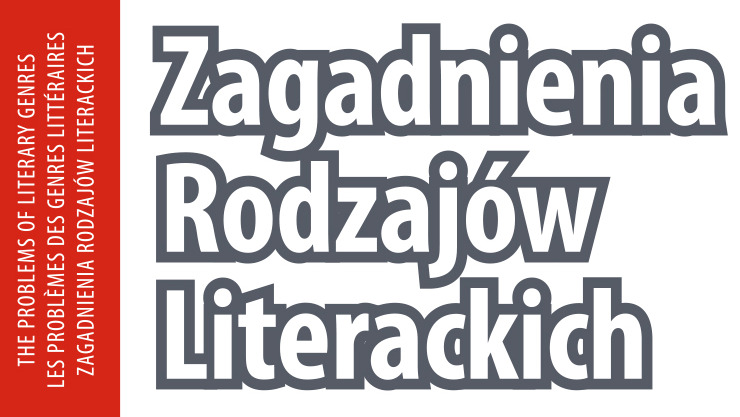Anagram jako quasi-gatunek – przypadek Iana Hamiltona Finlaya
DOI:
https://doi.org/10.26485/ZRL/2020/63.4/7Słowa kluczowe:
anagram, quasi-genre, Ian Hamilton FinlayAbstrakt
The subject of the text is a very special case of the functioning of an anagram in literature, when it becomes a quasi-literary genre. The author presents, in many different examples, the traditional approach to the anagram as a stylistic figure, indicating its various uses in culture and also in everyday life. He also discusses an anagram in terms of Ferdinand de Saussure, who studied phonetic anagrams, e.g. in Homer or in the Vedic texts. Referring to the works of the Scottish poet Ian Hamilton Finley, Adam Dziadek discusses anagram as a quasi-literary genre. The anagram itself is a thematic phenomenon in Finley’s work and described in various ways in metatextual statements. In this quasi-genre, the classical patterns of anagrams are combined with phonetic anagrams, what counts here is the semantic sphere of the work, but equally important is the sphere of sound, the sound focalization, which expands semantic fields and surprisingly associates or binds distant words. Finley defines anagrams in many different ways. On the one hand, when defining them, he refers to letter transpositions, combinations, pivots, compositions, but some of his definitions form poetic sentences. Anagram becomes a practice of thinking, writing, and arranging poetic texts, and at the same time designs its own reception, which also includes sound focalization. Finley’s anagrams are short poetic poems, the composition is based on transpositions and letter combinations. Single anagrams are arranged in a series of poems.
Liczba pobrań
Bibliografia
Barańczak Stanisław (2017), Pegaz zdębiał, Warszawa.
Bravo F. (2011), Anagrammes. Sur une hypothese de Ferdinand de Saussure, Lambert-Lucas, Limoges.
Chailley Jacques (1981), Anagrammes musicales et „langages communicables”, „Revue de Musicologie”, t. 67, nr 1, s. 69–79.
Finlay Ian Hamilton (2012), Selections, oprac. i wstęp A. Finlay, University of California Press, Berkeley.
Guida per un’edizione digitale dei manoscritti di Ferdinand de Saussure (2013), red. Gambarara D., Marchese M.P., Dell’Orso, Alessandria.
Kłosiński Krzysztof (1997), Roland Barthes. Le plaisir du texte [w:] Przewodnik po literaturze filozoficznej XX wieku, red. Skarga B., przy współpracy S. Borzyma i H. Floryńskiej-Lalewicz, T. 5, PWN, Warszawa, s. 50.
Kłosiński Krzysztof (1999), Signifiance, „Pamiętnik Literacki”, z. 2, s. 11–26.
Monachino Teresa (2006), Words Fail Me, Phaidon, London.
Risset Jacqueline (1995), L’Anagramme du Désir. Sur la Délie de Maurice Sceve, Distribution Distique, Paris.
Saussure Ferdinand de (2013), Anagrammes Homériques, red. Testenoire P.-Y., Lambert-Lucas, Limoges.
Spire André (1949), Plaisir poétique et plaisir musculaire, Jose Corti, Paris.
Starobinski Jean (1971), Les mots sous les mots: Les anagrammes de Ferdinand de Saussure, Gallimard, Paris.
Testenoire Pierre Yves (2013), Ferdinand de Saussure a la recherche des anagrammes, Lambert-Lucas, Limoges.
Tuwim Julian (2008), Pegaz dęba, Iskry, Warszawa.
Tzara Tristan (1991), Le secret de Villon [w:] tenże, Oeuvres completes, t. 6, Flammarion, Paris, s. 399–530.
Wheatley Henry Benjamin (1862), Of Anagrams, London.








